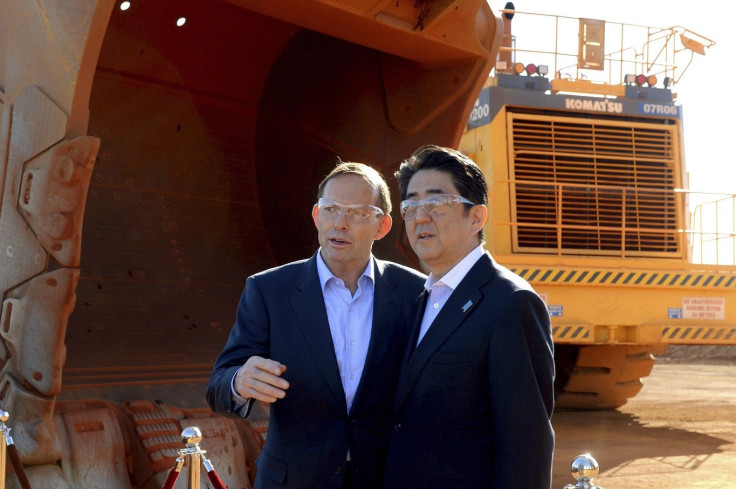Japan, Australia, US To Strengthen Defence Ties In July Military Exercise As China Tension Escalates

Japan will be joining Australia and the United States in a military exercise for the first time as tensions with China escalate due to its construction activities in the South China Sea. The drills are seen as a sign of the growing security links in the region.
While only 40 Japanese military officers and soldiers are expected to join in July compared to 30,000 troops from the U.S. and Australia, experts believe the effort shows how the Obama administration wants to foster cooperation among its allies in Asia, reports Reuters. All three countries said they were concerned about the freedom of movement in the critical trade route in the disputed islands in the South China Sea.
The Talisman Sabre biennial exercises will be held in locations around Australia. The three countries will participate in drills involving maritime operations, amphibious landings and special forces tactics and urban warfare.
Euan Graham, director of the International Security Program at the Lowy Institute in Sydney, said the U.S. may be trying to get its allies to do more. “There is an obvious symmetry between Japan as the upper anchor of the Western Pacific alliance and Australia as the southern anchor,” said Graham.
A spokesman for the Japanese government said the country’s army will send 40 personnel to participate in a bi-annual drill. “We will participate in joint exercises with the U.S. marines, rather than operating directly with the Australian military,” he said.
Previous reports have indicated that China has created seven artificial islands in the disputed Spratly archipelago. China is feared to impose air and sea restrictions in the area once construction work is complete. The Chinese government has declared it has the right to set up an Air Defence Identification Zone but current conditions did not create the need for one.
The Guardian reports that the U.S. is planning to send warships and surveillance aircraft within 12 nautical miles of the disputed reefs. The Chinese government claims most of the South China Sea where it has accelerated its construction of an airstrip.
The Spratly islands is also claimed in whole or in part by the Philippines, a U.S. ally, and Vietnam among other Asian countries. China and Japan are both claiming the Tokyo-controlled Senkaku islands in the East China Sea.
(To report problems or leave feedback on this article, contact: r.su@ibtimes.com.au)





















